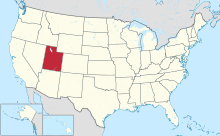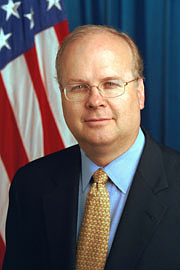Portal:Utah
Appearance
Portal maintenance status: (July 2018)
|
The Utah Portal  Utah (/ˈjuːtɑː/ YOO-tah, /ˈjuːtɔː/ ⓘ YOO-taw) is a landlocked state in the Mountain West subregion of the Western United States. It is one of the Four Corners states, sharing a border with Arizona, Colorado, and New Mexico. It also borders Wyoming to its northeast, Idaho to its north, and Nevada to its west. In comparison to all the U.S. states and territories, Utah, with a population of just over three million, is the 13th largest by area, the 30th most populous, and the 11th least densely populated. Urban development is mostly concentrated in two regions: the Wasatch Front in the north-central part of the state, which includes the state capital, Salt Lake City, and is home to roughly two-thirds of the population; and Washington County in the southwest, which has somewhat more than 180,000 residents. Most of the western half of Utah lies in the Great Basin. Utah has been inhabited for thousands of years by various indigenous groups, such as the ancient Puebloans, the Navajo, and the Ute. The first Europeans to arrive - in the mid-16th century - were the Spanish. Because of the region's challenging geography and harsh climate, it only became a peripheral part of New Spain (and later of Mexico). Even while it was Mexican territory, many of the Utah region’s earliest European settlers were from the United States; notable among these were Mormons who were fleeing marginalization and persecution in the United States and arrived via the so-called Mormon Trail. In 1848, after the Mexican–American War, the region was annexed by the U.S., becoming part of the Utah Territory, which included what later became Colorado and Nevada. Disputes between the dominant Mormon community and the federal government delayed Utah's admission as a state: in 1896, after it agreed to outlaw polygamy, it was admitted as the 45th state. People from Utah are known as Utahns. Slightly over half of all Utahns are Mormons, the vast majority of whom are members of the Church of Jesus Christ of Latter-day Saints (LDS Church), which has its world headquarters in Salt Lake City; Utah is the only state where a majority of the population belongs to a single church. The LDS Church greatly influences Utahn culture, politics, and daily life, though since the 1990s the state has become more religiously diverse as well as secular. (Full article...)
|
| Credit: User:Huebi |

Karl Christian Rove (born December 25, 1950) is an American Republican political consultant, policy advisor, and lobbyist. He was Senior Advisor and Deputy Chief of Staff during the George W. Bush administration until his resignation on August 31, 2007. He has also headed the Office of Political Affairs, the Office of Public Liaison, and the White House Office of Strategic Initiatives. Rove was one of the architects of the Iraq War.
Prior to his White House appointments, he is credited with the 1994 and 1998 Texas gubernatorial victories of George W. Bush, as well as Bush's 2000 and 2004 successful presidential campaigns. In his 2004 victory speech, Bush referred to Rove as "the Architect". Rove has also been credited for the successful campaigns of John Ashcroft (1994 U.S. Senate election), Bill Clements (1986 Texas gubernatorial election), Senator John Cornyn (2002 U.S. Senate election), Governor Rick Perry (1990 Texas Agriculture Commission election), and Phil Gramm (1982 U.S. House and 1984 U.S. Senate elections). Since leaving the White House, Rove has worked as a political analyst and contributor for Fox News, Newsweek, and The Wall Street Journal. (Full article...)

The Grand Canyon Trophy Game (also known as the Grand Canyon Rivalry is a series of American college football games, described by some as a rivalry, between the Northern Arizona Lumberjacks and the Southern Utah Thunderbirds. The Grand Canyon Trophy is presented to the winner of the game. The Lumberjacks are the current holder of the trophy. (Full article...)


| Credit: U.S. Geological Survey |
Non-Hispanic White 60–70% 70–80% 80–90% 90%+ |
Native American 50–60% |
State symbols:
Articles:
Lists:
Pictures:
|
|
|
|
|
Rules | Match log | Results page (for watching) | Last updated: 2024-11-26 22:00 (UTC)
Note: The list display can now be customized by each user. See List display personalization for details.
 |
Here are some tasks awaiting attention:
|
The following Wikimedia Foundation sister projects provide more on this subject: